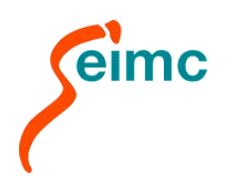Hoy en día, la reacción en cadena de la polimerasa (PCR) se utiliza normalmente en la rutina asistencial de la mayoría de nuestros laboratorios, pero su empleo se ha limitado, con pocas excepciones, al campo de la virología y en especial a un reducido grupo de virus con gran interés económico, para los que se dispone de ensayos comerciales bien estandarizados. Por diversas razones, la PCR convencional se ha implementado poco en el diagnóstico de otras muchas enfermedades infecciosas a pesar de aportar indudables ventajas. La PCR a tiempo real combinada con los nuevos sistemas automáticos para la purificación de ácidos nucleicos, ofrece una plataforma ideal para el desarrollo de una gran variedad de pruebas moleculares para la identificación y cuantificación de los agentes infecciosos de interés clínico. Debido a sus indudables ventajas, como la facilidad de empleo, la mayor rapidez o el menor riesgo de contaminación, la PCR a tiempo real, irá reemplazando la PCR convencional y se extenderá a un amplio abanico de aplicaciones microbiológicas.
PCR based assays are currently used routinely in most microbiology laboratories. But, with few exceptions, they are restricted to the field of virology, especially to a limited number of viral targets with important economical interest for which commercially well standardized assays are available. For several reasons, it has had a poor implementation of the PCR assays into routine diagnostics for other infectious diseases despite they are advantageous. Combined with automated sample isolation of nucleic acids, real-time PCR gives an ideal platform for the development of molecular assays for a wide range of infectious agents with clinical interest. Because of its advantages, as simplicity, rapidity and minor risk of contamination, real-time PCR will go replace conventional PCR assays and its use will extend to a wide range of applications in clinical microbiology.







